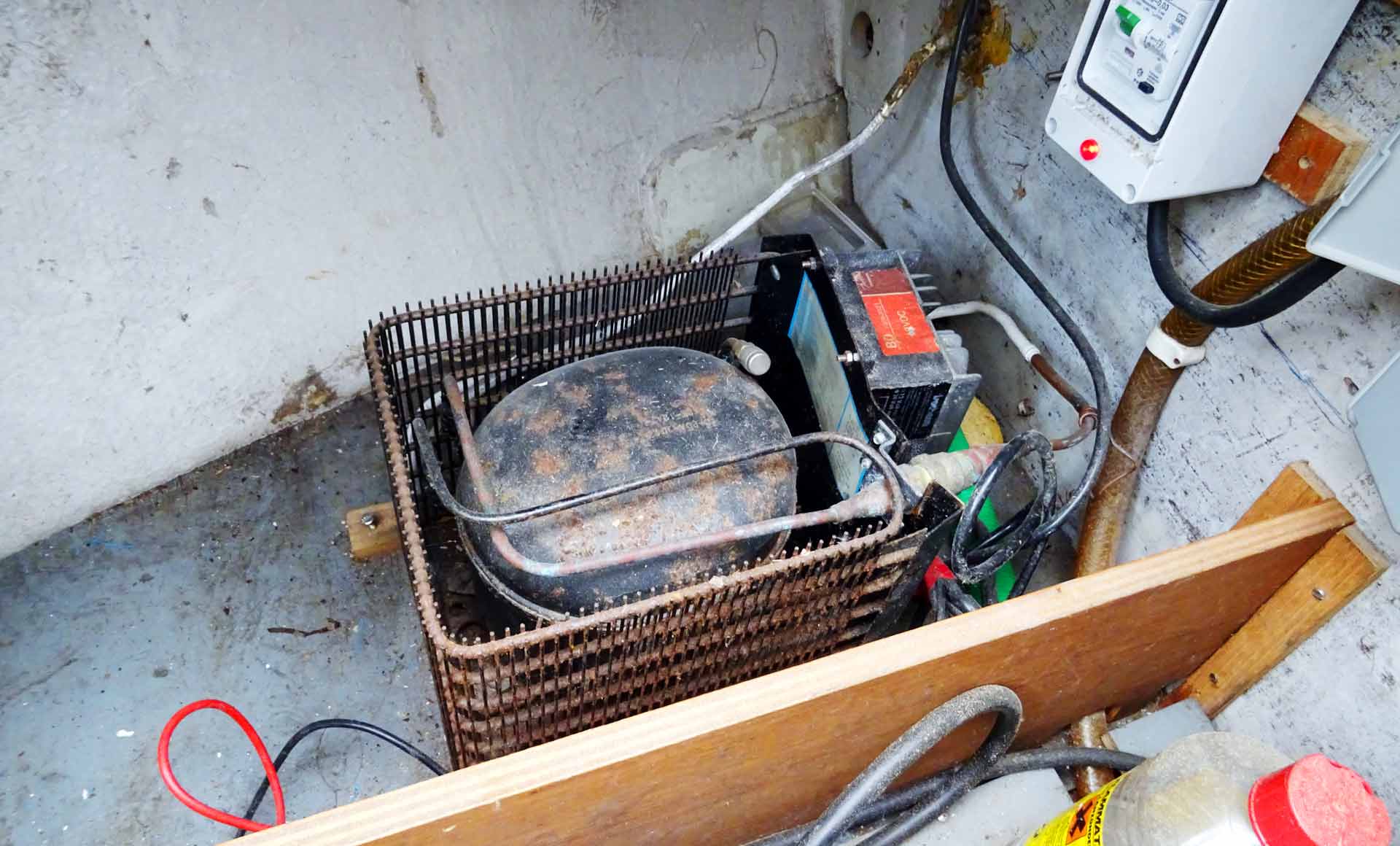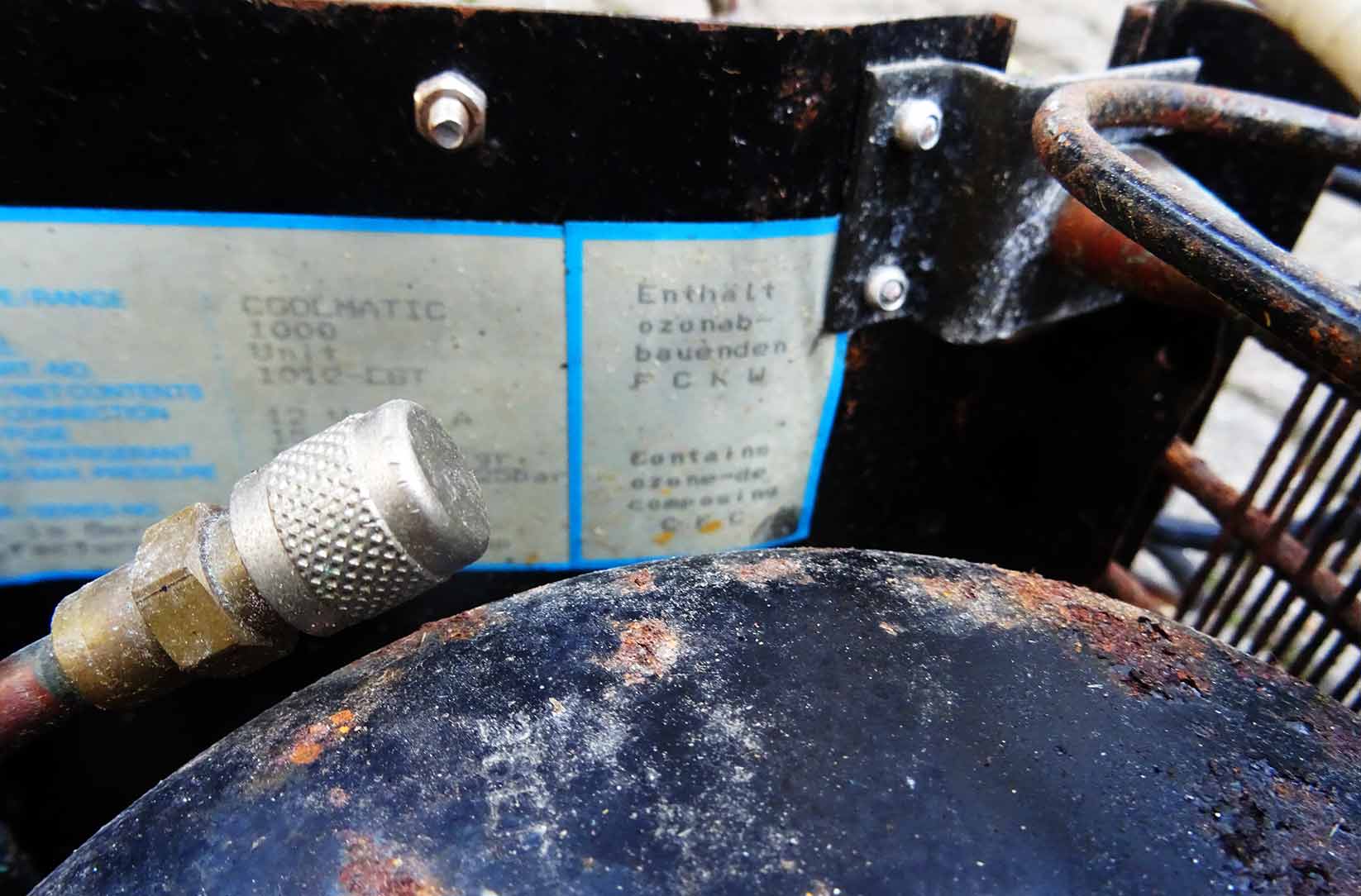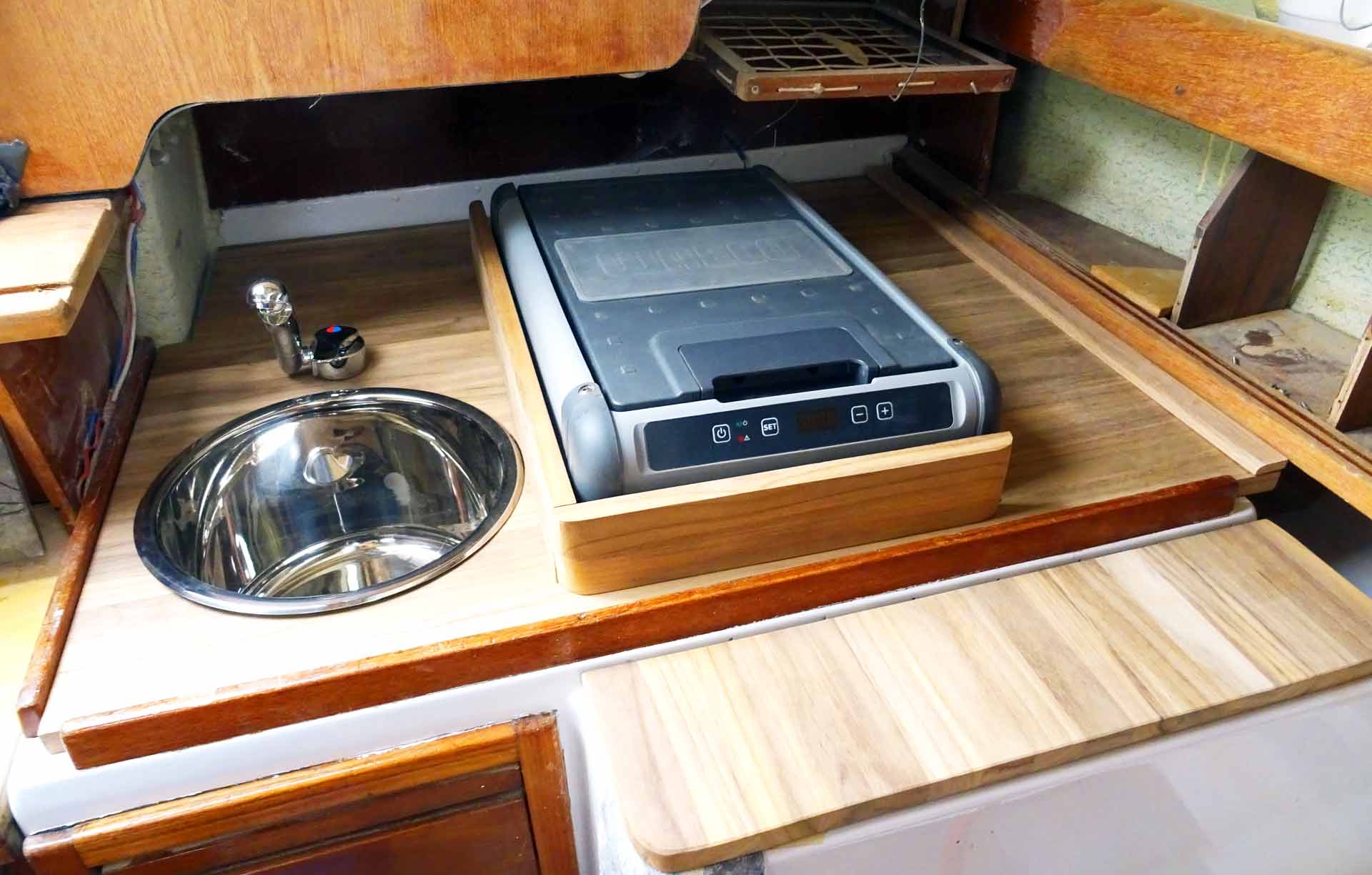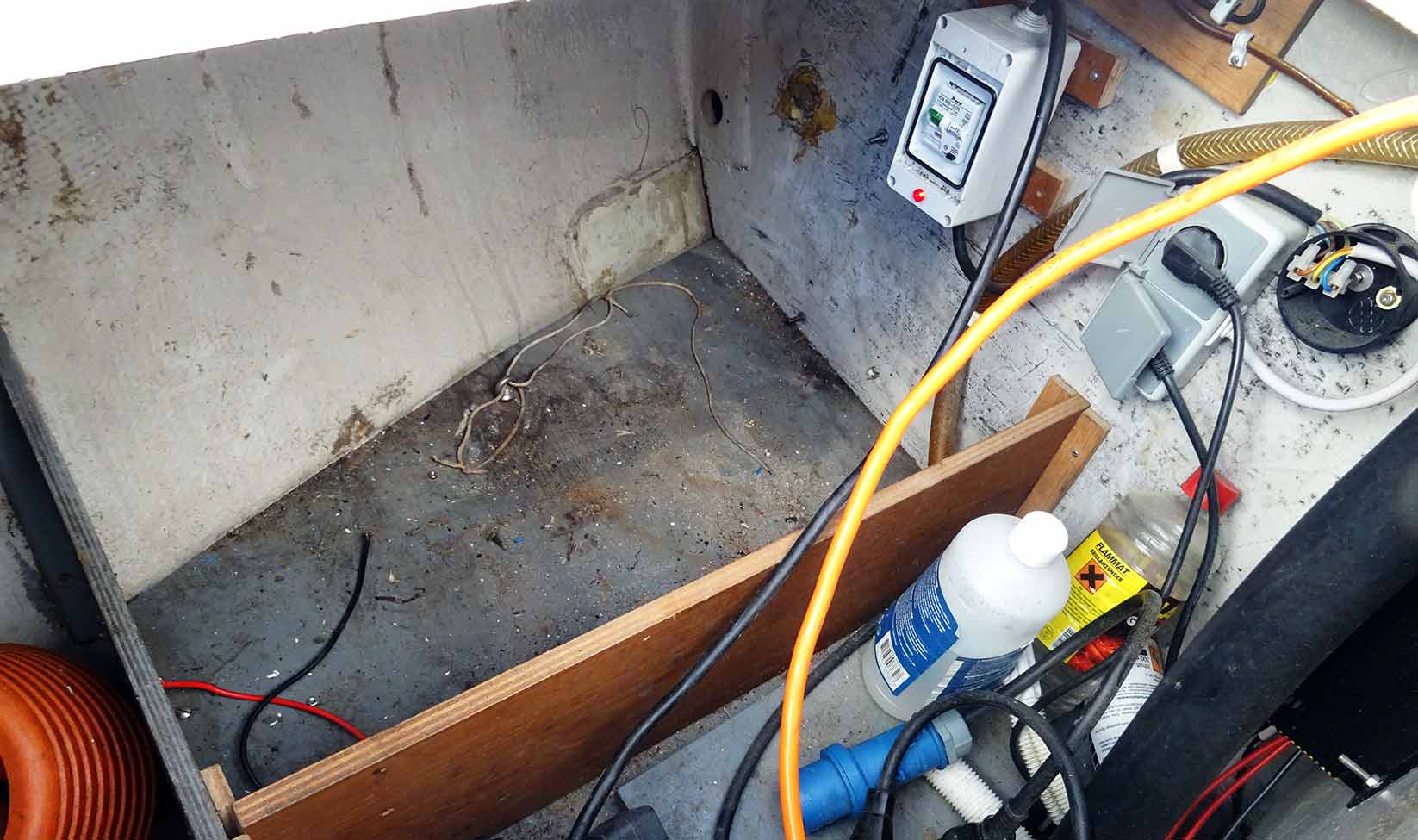Last week I did have some spare time as the Teak stuff I was working on needed some drying time, so I focused my attention to the galley again which I was working with in September (read here about the first steps of galley refurbishment). Today it was time to get rid of the old cooling unit.
Where I started
My King´s Cruiser 33 classic sailing yacht was equipped with a full scale cooler with freezing function. The unit itself is placed outside of the cabin in the portside locker placed on top of the Diesel tank. There are two cables running into the cabin: A thick one, which is the insulated pipe for the cooling agent cycle and a smaller one for the control unit.

This old freezer is going to be replaced since it consumes too much energy, is very heavy and since I will do mostly weekend- and week-long trips with this boat I have no real demand for such a big oversized cooling unit. So that´s a rare chance to save energy and weight and to live up to my motto of sailing “no frills”. But what should you consider by working with cooling units?
CFC: Environmental concerns
First of all the cooling agent that is running inside of the freezers: With very old models, older than 30 years, it is very likely that this agent is Chlorofluorocarbon based (CFC). This is a very, very aggressive atmospheric killer-gas that must not leave the cooler. The same goes with newer units, though freezing agents used here are less hazardous – it is advised that a professional craftsman must to do this job. Why? Because the agent is gaseous in normal temperatures and will instantly vaporize into the air when the cooling cycle is somehow opened up.

Here in Germany this service will cost from 100 to 200 Euros which is a fairly high investment, nevertheless our atmosphere should be worth it. After closely inspecting my own cooling unit and unscrewing all mounts in preparation for the pro job, I discovered a leak in the lead (?) pipe of the cooling cycle and phoned the pre-owner he informed me that it is likely that the cycle has been damaged already and the agent unfortunately vaporized long ago. Well, that´s a loss for our skies but a saving on my wallet. Calling off the professional, I have been able to retrieve the freezer by myself. Again: Please don´t do this with an intact cooling unit.
The Replacement: Compressor Cooler by Dometic
As I have written in a previous article about the new galley (read it here) I am going to replace the cooling unit with a compressor box by Dometic. This box will not only consume much less energy but it is made for being switched on and off all the time as it is a proper outdoor and camping tool whereas the full-size fridge of my boat would not have liked it being turned on and off every weekend.

Now that the freezing unit is disassembled I will have to shut the inlets through the hull to the locker
In the coming days and will thus have won a load of space there. What can I use it for? Maybe for the coils of rope or fenders, maybe for other stuff. I am relieved of having gotten rid of the old appliance in the first place.

So what´s up next? Apart from the ongoing woodworks (mainly ceiling and roofing panels I will slowly but surely start to design the all-new wiring circuits for LED-lighting and all the other electrical stuff onboard – a job I must admit I am not very fond of. But I´ve got help.
Other interesting articles on that topic:
Refurbishing the galley
Shopping time: Dometic has it all
That´s tasty: Spaghetti á la X-Yacht
